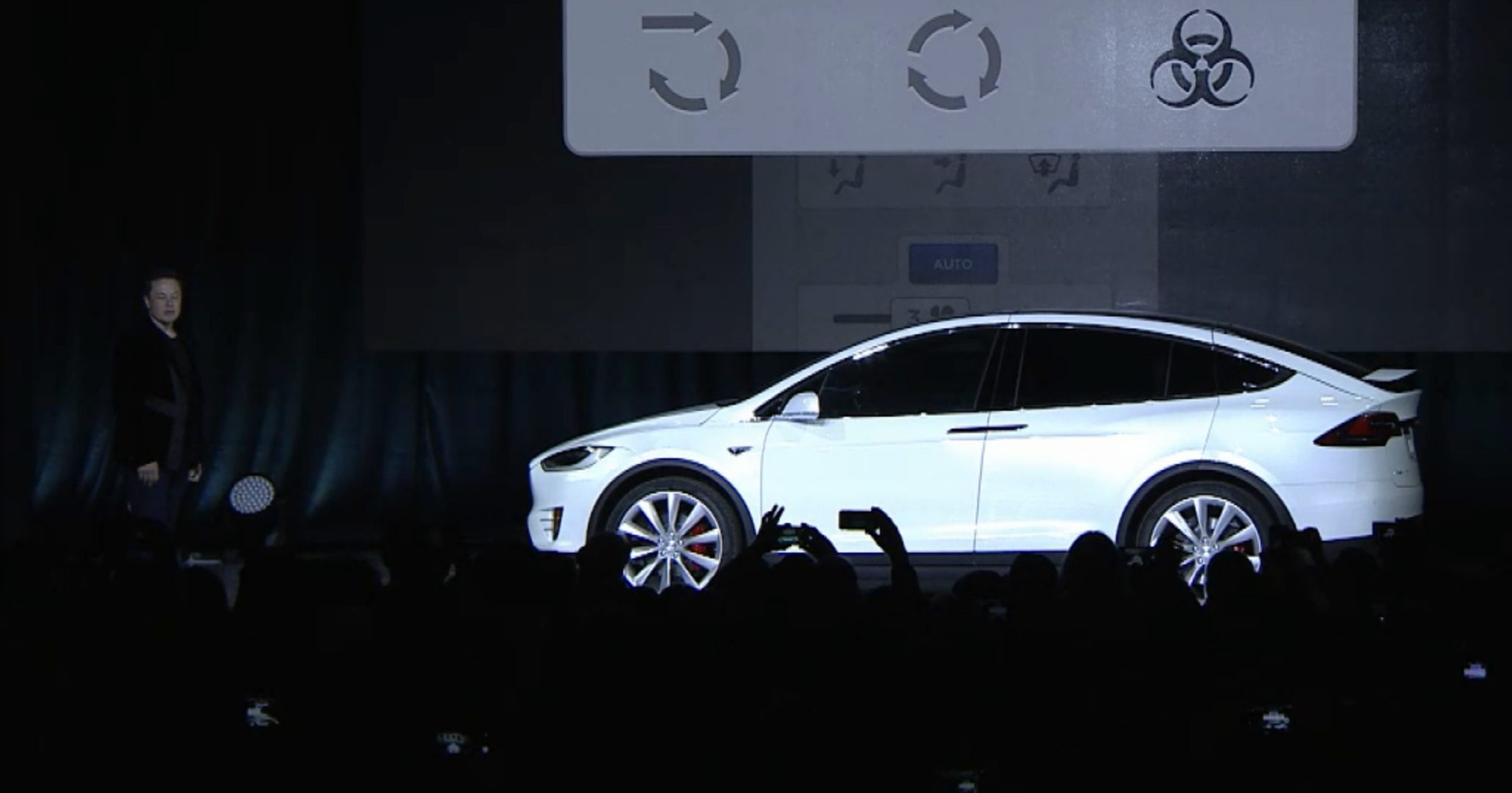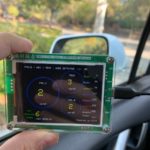

News
Tesla’s ‘Bioweapon Defense Mode’ is proving invaluable to owners affected by CA wildfires
When Elon Musk initially talked about the Model X’s “Bioweapon Defense Mode,” the company’s skeptics dismissed the feature as a simple gimmick. For owners of the company’s electric cars currently affected by the raging wildfires in CA, though, Bioweapon Defense Mode has become a welcome blessing, allowing them and their passengers to breathe clean air despite the worsening air quality outside.
California is currently facing its most destructive fires in the state’s history. As of Friday, the northern California city of Paradise has already been lost to the blaze. More than 6,700 structures have also burned to the ground in northern CA’s Camp Fire on Thursday and Friday. At least nine people have perished against the onslaught of expanding wildfire, and more than 250,000 people have been forced out of their homes as well. Despite authorities’ best efforts, Los Angeles fire officials noted on Friday afternoon that the blaze remains “zero contained.”
Reports from members of the Tesla community living in areas affected by the wildfires have noted that their vehicle’s Bioweapon Defense Mode has effectively maintained the air quality inside their cars. One such owner, Andrei Bulu, even posted a couple of pictures on social media showing the air readings from inside and outside his Model X as he was driving through the Bay Area, which is being affected by the fire in Paradise. As could be seen in the Model X owner’s post, the air quality readings improve dramatically when his electric SUV’s windows were up and Bioweapon Defense Mode was enabled.
- [Credit: AndreiB/Twitter]
- [Credit: AndreiB/Twitter]
Tesla’s Bioweapon Defense Mode allows occupants to breathe clean air. [Credit: AndreiB/Twitter]
Other Tesla owners driving in areas currently affected by the CA fires have shared similar experiences as well.
https://twitter.com/teslaamit519/status/1061056967609790464
Bioweapon Defense Mode incited a notable amount of lighthearted laughter from the audience when Elon Musk announced the feature for the Model X. During the vehicle’s unveiling, Musk candidly stated that the function is possible due to the Model X’s incredibly large HEPA filter, which is around ten times as large as those of a regular fossil fuel-powered car. Tesla noted that Bioweapon Defense Mode, which was later added on the Model S, is “100 times more effective than premium automotive filters, removing at least 99.97% of fine particulate matter and gaseous pollutants, as well as bacteria, viruses, pollen, and mold spores.”
In true Tesla fashion, the company’s skeptics were notably unimpressed with the feature, with many claiming that Bioweapon Defense Mode was but a marketing statement. Tesla later debunked these claims by holding a controlled test of a Model X inside a bubble contaminated with extreme levels of pollution (1,000 µg/m3 of PM2.5 vs. the EPA’s “good” air quality index limit of 12 µg/m3). Within two minutes, the Model X’s HEPA filtration system had scrubbed the air inside the all-electric SUV, and in the following minutes, even the air around the vehicle started getting cleaner.
If Tesla can help people in California wildfire, please let us know. Model S & X have hospital grade HEPA filters. Maybe helpful for transporting people.
— Elon Musk (@elonmusk) November 10, 2018
While Tesla’s electric car owners are able to breathe clean air despite the CA wildfires due to their vehicles’ Bioweapon Defense Mode, Elon Musk has stated that the company’s electric cars might prove helpful in moving people away from areas compromised by the blaze. An email Musk sent to employees reportedly even encouraged Tesla workers to provide assistance to the ongoing rescue efforts if they can, and not worry about compensation.
Over the years, Tesla has developed a reputation for helping out when it is able. Amidst the onslaught of this year’s hurricanes, Tesla provided temporary free unlimited Supercharging and a range upgrade to owners of Model S 40, 60, and 70 vehicles, enabling them to leave hurricane-affected areas. Elon Musk, for his part, also continues to provide some humanitarian aid as well. Just last month, it was revealed that Musk had been helping Flint, MI by giving the necessary funds to install water filtration systems to the district’s school buildings.

News
Tesla is not sparing any expense in ensuring the Cybercab is safe
Images shared by the longtime watcher showed 16 Cybercab prototypes parked near Giga Texas’ dedicated crash test facility.

The Tesla Cybercab could very well be the safest taxi on the road when it is released and deployed for public use. This was, at least, hinted at by the intensive safety tests that Tesla seems to be putting the autonomous two-seater through at its Giga Texas crash test facility.
Intensive crash tests
As per recent images from longtime Giga Texas watcher and drone operator Joe Tegtmeyer, Tesla seems to be very busy crash testing Cybercab units. Images shared by the longtime watcher showed 16 Cybercab prototypes parked near Giga Texas’ dedicated crash test facility just before the holidays.
Tegtmeyer’s aerial photos showed the prototypes clustered outside the factory’s testing building. Some uncovered Cybercabs showed notable damage and one even had its airbags engaged. With Cybercab production expected to start in about 130 days, it appears that Tesla is very busy ensuring that its autonomous two-seater ends up becoming the safest taxi on public roads.
Prioritizing safety
With no human driver controls, the Cybercab demands exceptional active and passive safety systems to protect occupants in any scenario. Considering Tesla’s reputation, it is then understandable that the company seems to be sparing no expense in ensuring that the Cybercab is as safe as possible.
Tesla’s focus on safety was recently highlighted when the Cybertruck achieved a Top Safety Pick+ rating from the Insurance Institute for Highway Safety (IIHS). This was a notable victory for the Cybertruck as critics have long claimed that the vehicle will be one of, if not the, most unsafe truck on the road due to its appearance. The vehicle’s Top Safety Pick+ rating, if any, simply proved that Tesla never neglects to make its cars as safe as possible, and that definitely includes the Cybercab.
Elon Musk
Tesla’s Elon Musk gives timeframe for FSD’s release in UAE
Provided that Musk’s timeframe proves accurate, FSD would be able to start saturating the Middle East, starting with the UAE, next year.

Tesla CEO Elon Musk stated on Monday that Full Self-Driving (Supervised) could launch in the United Arab Emirates (UAE) as soon as January 2026.
Provided that Musk’s timeframe proves accurate, FSD would be able to start saturating the Middle East, starting with the UAE, next year.
Musk’s estimate
In a post on X, UAE-based political analyst Ahmed Sharif Al Amiri asked Musk when FSD would arrive in the country, quoting an earlier post where the CEO encouraged users to try out FSD for themselves. Musk responded directly to the analyst’s inquiry.
“Hopefully, next month,” Musk wrote. The exchange attracted a lot of attention, with numerous X users sharing their excitement at the idea of FSD being brought to a new country. FSD (Supervised), after all, would likely allow hands-off highway driving, urban navigation, and parking under driver oversight in traffic-heavy cities such as Dubai and Abu Dhabi.
Musk’s comments about FSD’s arrival in the UAE were posted following his visit to the Middle Eastern country. Over the weekend, images were shared online of Musk meeting with UAE Defense Minister, Deputy Prime Minister, and Dubai Crown Prince HH Sheikh Hamdan bin Mohammed. Musk also posted a supportive message about the country, posting “UAE rocks!” on X.
FSD recognition
FSD has been getting quite a lot of support from foreign media outlets. FSD (Supervised) earned high marks from Germany’s largest car magazine, Auto Bild, during a test in Berlin’s challenging urban environment. The demonstration highlighted the system’s ability to handle dense traffic, construction sites, pedestrian crossings, and narrow streets with smooth, confident decision-making.
Journalist Robin Hornig was particularly struck by FSD’s superior perception and tireless attention, stating: “Tesla FSD Supervised sees more than I do. It doesn’t get distracted and never gets tired. I like to think I’m a good driver, but I can’t match this system’s all-around vision. It’s at its best when both work together: my experience and the Tesla’s constant attention.” Only one intervention was needed when the system misread a route, showcasing its maturity while relying on vision-only sensors and over-the-air learning.
News
Tesla quietly flexes FSD’s reliability amid Waymo blackout in San Francisco
“Tesla Robotaxis were unaffected by the SF power outage,” Musk wrote in his post.

Tesla highlighted its Full Self-Driving (Supervised) system’s robustness this week by sharing dashcam footage of a vehicle in FSD navigating pitch-black San Francisco streets during the city’s widespread power outage.
While Waymo’s robotaxis stalled and caused traffic jams, Tesla’s vision-only approach kept operating seamlessly without remote intervention. Elon Musk amplified the clip, highlighting the contrast between the two systems.
Tesla FSD handles total darkness
The @Tesla_AI account posted a video from a Model Y operating on FSD during San Francisco’s blackout. As could be seen in the video, streetlights, traffic signals, and surrounding illumination were completely out, but the vehicle drove confidently and cautiously, just like a proficient human driver.
Musk reposted the clip, adding context to reports of Waymo vehicles struggling in the same conditions. “Tesla Robotaxis were unaffected by the SF power outage,” Musk wrote in his post.
Musk and the Tesla AI team’s posts highlight the idea that FSD operates a lot like any experienced human driver. Since the system does not rely on a variety of sensors and a complicated symphony of factors, vehicles could technically navigate challenging circumstances as they emerge. This definitely seemed to be the case in San Francisco.
Waymo’s blackout struggles
Waymo faced scrutiny after multiple self-driving Jaguar I-PACE taxis stopped functioning during the blackout, blocking lanes, causing traffic jams, and requiring manual retrieval. Videos shared during the power outage showed fleets of Waymo vehicles just stopping in the middle of the road, seemingly confused about what to do when the lights go out.
In a comment, Waymo stated that its vehicles treat nonfunctional signals as four-way stops, but “the sheer scale of the outage led to instances where vehicles remained stationary longer than usual to confirm the state of the affected intersections. This contributed to traffic friction during the height of the congestion.”
A company spokesperson also shared some thoughts about the incidents. “Yesterday’s power outage was a widespread event that caused gridlock across San Francisco, with non-functioning traffic signals and transit disruptions. While the failure of the utility infrastructure was significant, we are committed to ensuring our technology adjusts to traffic flow during such events,” the Waymo spokesperson stated, adding that it is “focused on rapidly integrating the lessons learned from this event, and are committed to earning and maintaining the trust of the communities we serve every day.”










